-
Home
-
Contributors
-
International
-
Account
-
Information
More From Contributor
- 0 &176;COperating relative humidity (H-H)50
- 90% Harmonized System (HS) code 8517620090 Windows operating systems supported Windows 10, Windows 10 Education, Windows 10 Education x 64, Windows 10 Enterprise, Windows 10 Enterprise x 64, Windows 10 Home, Windows 10 Home x 64, Windows 10 IOT Core, Windows 10 Pro, Windows 10 Pro x 64, Windows 7, Windows 7 Enterprise, Windows 7 Enterprise x 64, Windows 7 Home Basic, Windows 7 Home Basic x 64, Windows 7 Home Premium, Windows 7 Home Premium x 64, Windows 7 Professional, Windows 7 Professional x 64, Windows 7 Starter, Windows 7 Starter x 64, Windows 7 Ultimate, Windows 7 Ultimate x 64, Windows 7 x 64, Windows 8, Windows 8 Enterprise, Windows 8 Enterprise x 64, Windows 8 Pro, Windows 8 Pro x 64, Windows 8 x 64, Windows 8.1, Windows 8.1 Enterprise, Windows 8.1 Enterprise x 64, Windows 8.1 Pro, Windows 8.1 Pro x 64, Windows 8.1 x 64 Linux operating systems supported Y Width 22 mm Depth 30 mm Height 2.4 mm Weight 143.5 g Cables included Coaxial Mounting brackets included Y Package type Box Package width 205 mm Package depth 26 mm Package height 145 mm Package weight 143.5 g Form factor M.2 2230 Supported Under v Pro N Interface type Wi-Fi (PCIe), BT (USB) Product type Wireless Ethernet adapter ARK ID123742MU-MIMOYLaunch date Q3'17 Product brief URLhttps://www.intel.com/content/www/us/en/wireless-products/dual-b&-wireless-ac-8265-desktop-kit-brief.html Status Launched ...
- Intel Control-flow Enforcement Technology (CET) helps protect against the misuse of legitimate code snippets through return-oriented programming (ROP) control-flow hijacking attacks.\n\n\n\n Processor Processor manufacturer Intel Processor codename Alder Lake Memory bandwidth supported by processor (max)76.8 GB/s Processor cache 4 MBProcessor model G6900 Processor threads 2 Processor operating modes 64-bit Stepping H0 Bus type DMI4 Processor family Intel&174; Celeron&174; GProcessor cores 2 Box Yes Processor socket LGA 1700 Processor cache type Smart Cache Performance cores 2 Performance-core base frequency 3.4 GHz Processor base power 46 WMaximum number of DMI lanes 8 Memory Maximum internal memory supported by processor 128 GBMemory types supported by processor DDR4-SDRAM, DDR5-SDRAMMemory bandwidth supported by processor (max)76.8 GB/s Memory channels Dual-channel Memory bandwidth (max)76.8 GB/s Graphics Discrete graphics adapter No On-board graphics adapter outputs supported Embedded Display Port (e DP) 1.4b, Display Port 1.4a, HDMI 2.1 On-board graphics adapter maximum resolution (Display Port)7680 x 4320 pixels Number of execution units 16 On-board graphics adapter ID0x 4693 On-board graphics adapter maximum resolution (e DP
- Integrated Flat Panel)5120 x 3200 pixels On-board graphics adapter refresh rate at maximum resolution (HDMI)60 Hz On-board graphics adapter refresh rate at maximum resolution (Display Port)60 Hz On-board graphics adapter refresh rate at maximum resolution (e DP
- Integrated Flat Panel)120 Hz Number of displays supported (on-board graphics)4 On-board graphics adapter maximum resolution (HDMI)4096 x 2160 pixels On-board graphics adapter Direct X version 12.0 On-board graphics adapter Open GL version 4.5 On-board graphics adapter model Intel UHD Graphics 710 On-board graphics adapter Yes On-board graphics adapter dynamic frequency (max)1300 MHz On-board graphics adapter base frequency 300 MHz Discrete graphics adapter model Not available Multi-Format Codec Engines 1 Technical details Intel&174; Secure Key Yes Thermal Monitoring Technologies Yes Intel&174; Turbo Boost Technology No Intel&174; Quick Sync Video Technology Yes Intel&174; Hyper Threading Technology (Intel&174; HT Technology) No Intel&174; Clear Video HD Technology (Intel&174; CVT HD) Yes Intel&174; AES New Instructions (Intel&174; AES-NI) Yes Idle States Yes Execute Disable Bit Yes Enhanced Intel Speed Step Technology Yes PCI Express slots version 5.0, 4.0PCI Express configurations 1x 16+1x 4, 2x 8+1x 4 Supported instruction sets SSE4.1, SSE4.2, AVX 2.0 Scalability 1SIntel VT-x with Extended Page Tables (EPT) Yes Embedded options available No CPU configuration (max)1 Graphics outpute DP 1.4b, DP 1.4a, HDMI 2.1 Intel Virtualization Technology for Directed I/O (VT-d) Yes Intel 64 Yes Status Launched Market segment Desktop Launch date Q1'22 Intel Virtualization Technology (VT-x) Yes Processor cache type Smart Cache Open CL version 2.1 Features On-board graphics adapter ID0x 4693 Maximum number of PCI Express lanes 20 Processor package size 45 x 37.5 mm Thermal Monitoring Technologies Yes Idle States Yes Execute Disable Bit Yes PCI Express slots version 5.0, 4.0PCI Express configurations 1x 16+1x 4, 2x 8+1x 4 Supported instruction sets SSE4.1, SSE4.2, AVX 2.0 Scalability 1SEmbedded options available No CPU configuration (max)1 Market segment Desktop Harmonized System (HS) code 8542310001 Export Control Classification Number (ECCN)5A992CN3 Commodity Classification Automated Tracking System (CCATS)G167599 Use conditions PC/ Client/ Tablet Direct Media Interface (DMI) Revision 4.0 Processor special features Intel Virtualization Technology for Directed I/O (VT-d) Yes Intel 64 Yes Intel Turbo Boost Max Technology 3.0 No Intel&174; Speed Shift Technology Yes Intel&174; Optane&132;&162; Memory Ready Yes Intel&174; OS Guard Yes Intel&174; Secure Key Yes Intel&174; Turbo Boost Technology No Intel&174; Quick Sync Video Technology Yes Intel&174; Hyper Threading Technology (Intel&174; HT Technology) No Intel&174; Clear Video HD Technology (Intel&174; CVT HD) Yes Intel&174; AES New Instructions (Intel&174; AES-NI) Yes Enhanced Intel Speed Step Technology Yes Intel VT-x with Extended Page Tables (EPT) Yes Intel Virtualization Technology (VT-x) Yes Intel&174; Boot Guard Yes Intel&174; Volume Management Device (VMD) Yes Intel&174; Deep Learning Boost (Intel&174; DL Boost) Yes Mode-based Execute Control (MBE) Yes Intel&174; Control-flow Enforcement Technology (CET) Yes Intel&174; Thread Director No Intel&174; Gaussian & Neural Accelerator (Intel&174; GNA) 3.0 Yes Operational conditions Tjunction 100 &176;CPackaging data Package type Retail box Weight & dimensions Processor package size 45 x 37.5 mm Other features Maximum internal memory 128 GBCPU configuration (max)1 Graphics outpute DP 1.4b, DP 1.4a, HDMI 2.1\n\n Product Family: Celeron\n\n ...
- Intel Control-flow Enforcement Technology (CET) helps protect against the misuse of legitimate code snippets through return-oriented programming (ROP) control-flow hijacking attacks.\n\n\n\n Processor Processor manufacturer Intel Processor codename Alder Lake Memory bandwidth supported by processor (max)76.8 GB/s Processor cache 4 MBProcessor model G6900 Processor threads 2 Processor operating modes 64-bit Stepping H0 Bus type DMI4 Processor family Intel&174; Celeron&174; GProcessor cores 2 Box Yes Processor socket LGA 1700 Processor cache type Smart Cache Performance cores 2 Performance-core base frequency 3.4 GHz Processor base power 46 WMaximum number of DMI lanes 8 Memory Maximum internal memory supported by processor 128 GBMemory types supported by processor DDR4-SDRAM, DDR5-SDRAMMemory bandwidth supported by processor (max)76.8 GB/s Memory channels Dual-channel Memory bandwidth (max)76.8 GB/s Graphics Discrete graphics adapter No On-board graphics adapter outputs supported Embedded Display Port (e DP) 1.4b, Display Port 1.4a, HDMI 2.1 On-board graphics adapter maximum resolution (Display Port)7680 x 4320 pixels Number of execution units 16 On-board graphics adapter ID0x 4693 On-board graphics adapter maximum resolution (e DP
- Integrated Flat Panel)5120 x 3200 pixels On-board graphics adapter refresh rate at maximum resolution (HDMI)60 Hz On-board graphics adapter refresh rate at maximum resolution (Display Port)60 Hz On-board graphics adapter refresh rate at maximum resolution (e DP
- Integrated Flat Panel)120 Hz Number of displays supported (on-board graphics)4 On-board graphics adapter maximum resolution (HDMI)4096 x 2160 pixels On-board graphics adapter Direct X version 12.0 On-board graphics adapter Open GL version 4.5 On-board graphics adapter model Intel UHD Graphics 710 On-board graphics adapter Yes On-board graphics adapter dynamic frequency (max)1300 MHz On-board graphics adapter base frequency 300 MHz Discrete graphics adapter model Not available Multi-Format Codec Engines 1 Technical details Intel&174; Secure Key Yes Thermal Monitoring Technologies Yes Intel&174; Turbo Boost Technology No Intel&174; Quick Sync Video Technology Yes Intel&174; Hyper Threading Technology (Intel&174; HT Technology) No Intel&174; Clear Video HD Technology (Intel&174; CVT HD) Yes Intel&174; AES New Instructions (Intel&174; AES-NI) Yes Idle States Yes Execute Disable Bit Yes Enhanced Intel Speed Step Technology Yes PCI Express slots version 5.0, 4.0PCI Express configurations 1x 16+1x 4, 2x 8+1x 4 Supported instruction sets SSE4.1, SSE4.2, AVX 2.0 Scalability 1SIntel VT-x with Extended Page Tables (EPT) Yes Embedded options available No CPU configuration (max)1 Graphics outpute DP 1.4b, DP 1.4a, HDMI 2.1 Intel Virtualization Technology for Directed I/O (VT-d) Yes Intel 64 Yes Status Launched Market segment Desktop Launch date Q1'22 Intel Virtualization Technology (VT-x) Yes Processor cache type Smart Cache Open CL version 2.1 Features On-board graphics adapter ID0x 4693 Maximum number of PCI Express lanes 20 Processor package size 45 x 37.5 mm Thermal Monitoring Technologies Yes Idle States Yes Execute Disable Bit Yes PCI Express slots version 5.0, 4.0PCI Express configurations 1x 16+1x 4, 2x 8+1x 4 Supported instruction sets SSE4.1, SSE4.2, AVX 2.0 Scalability 1SEmbedded options available No CPU configuration (max)1 Market segment Desktop Harmonized System (HS) code 8542310001 Export Control Classification Number (ECCN)5A992CN3 Commodity Classification Automated Tracking System (CCATS)G167599 Use conditions PC/ Client/ Tablet Direct Media Interface (DMI) Revision 4.0 Processor special features Intel Virtualization Technology for Directed I/O (VT-d) Yes Intel 64 Yes Intel Turbo Boost Max Technology 3.0 No Intel&174; Speed Shift Technology Yes Intel&174; Optane&132;&162; Memory Ready Yes Intel&174; OS Guard Yes Intel&174; Secure Key Yes Intel&174; Turbo Boost Technology No Intel&174; Quick Sync Video Technology Yes Intel&174; Hyper Threading Technology (Intel&174; HT Technology) No Intel&174; Clear Video HD Technology (Intel&174; CVT HD) Yes Intel&174; AES New Instructions (Intel&174; AES-NI) Yes Enhanced Intel Speed Step Technology Yes Intel VT-x with Extended Page Tables (EPT) Yes Intel Virtualization Technology (VT-x) Yes Intel&174; Boot Guard Yes Intel&174; Volume Management Device (VMD) Yes Intel&174; Deep Learning Boost (Intel&174; DL Boost) Yes Mode-based Execute Control (MBE) Yes Intel&174; Control-flow Enforcement Technology (CET) Yes Intel&174; Thread Director No Intel&174; Gaussian & Neural Accelerator (Intel&174; GNA) 3.0 Yes Operational conditions Tjunction 100 &176;CPackaging data Package type Retail box Weight & dimensions Processor package size 45 x 37.5 mm Other features Maximum internal memory 128 GBCPU configuration (max)1 Graphics outpute DP 1.4b, DP 1.4a, HDMI 2.1\n\n Product Family: Celeron\n\n ...
- 70 &176;CMaximum operating temperature 70 &176;COperating vibration 2.17 GNon-operating vibration 3.13 GOperating shock 1000 GNon-operating shock 1000 GWidth 22 mm Depth 80 mm Weight 10 g Temperature monitoring & logging N Operating / non-operating shock 1000 GLaunch date Q3'18 Random write (8GB span)220000 IOPSSSD power consumption (idle)0.040 W Sequential reading 1800 MB/s Sequential writing speed 1800 MB/s Status Launched Random read (8GB span)150000 IOPSProduct codename Neptune Harbor ...
- 70 &176;CMaximum operating temperature 70 &176;COperating vibration 2.17 GNon-operating vibration 3.13 GOperating shock 1000 GNon-operating shock 1000 GWidth 22 mm Depth 80 mm Weight 10 g Temperature monitoring & logging N Operating / non-operating shock 1000 GLaunch date Q3'18 Random write (8GB span)220000 IOPSSSD power consumption (idle)0.040 W Sequential reading 1800 MB/s Sequential writing speed 1800 MB/s Status Launched Random read (8GB span)150000 IOPSProduct codename Neptune Harbor ...
Intel Celeron G5905 Processor 3.5 GHz 4 MB Smart Cache Box
increased energy efficiency when you don&153;t.\n\nIntel&174; Virtualization Technology (VT-x)\n\nIntel&174; Virtualization Technology (VT-x) allows one hardware platform to function as multiple &156;virtual&157; platforms. It offers improved manageability by limiting downtime and maintaining productivity by isolating computing activities into separate partitions.\n\nIntel&174; Virtualization Technology for Directed I/O (VT-d)\n\nIntel&174; Virtualization Technology for Directed I/O (VT-d) continues from the existing support for IA-32 (VT-x) and Itanium&174; processor (VT-i) virtualization adding new support for I/O-device virtualization. Intel VT-d can help end users improve security and reliability of the systems and also improve performance of I/O devices in virtualized
environments.\n\nIntel&174; VT-x with Extended Page Tables (EPT)\n\nIntel&174; VT-x with Extended Page Tables (EPT), also known as Second Level Address Translation (SLAT), provides acceleration for memory intensive virtualized applications. Extended Page Tables in Intel&174; Virtualization Technology platforms reduces the memory and power overhead costs and increases battery life through hardware optimization of page table management.\n\nIntel&174; 64\n\nIntel&174; 64 architecture delivers 64-bit computing on server, workstation, desktop and mobile platforms when combined with supporting software.&185; Intel 64 architecture improves performance by allowing systems to address more than 4 GB of both virtual and physical memory.\n\nInstruction Set\n\nAn instruction set refers to the basic
set of commands and instructions that a microprocessor understands and can carry out. The value shown represents which Intel&153;s instruction set this processor is compatible with.\n\nInstruction Set Extensions\n\nInstruction Set Extensions are additional instructions which can increase performance when the same operations are performed on multiple data objects. These can include SSE (Streaming SIMD Extensions) and AVX (Advanced Vector Extensions).\n\nIdle States\n\nIdle States (C-states) are used to save power when the processor is idle. C0 is the operational state, meaning that the CPU is doing useful work. C1 is the first idle state, C2 the second, and so on, where more power saving actions are taken for numerically higher C-states.\n\nEnhanced Intel SpeedStep&174;
Technology\n\nEnhanced Intel SpeedStep&174; Technology is an advanced means of enabling high performance while meeting the power-conservation needs of mobile systems. Conventional Intel SpeedStep&174; Technology switches both voltage and frequency in tandem between high and low levels in response to processor load. Enhanced Intel SpeedStep&174; Technology builds upon that architecture using design strategies such as Separation between Voltage and Frequency Changes, and Clock Partitioning and Recovery.\n\nThermal Monitoring Technologies\n\nThermal Monitoring Technologies protect the processor package and the system from thermal failure through several thermal management features. An on-die Digital Thermal Sensor (DTS) detects the core's temperature, and the thermal management features
reduce package power consumption and thereby temperature when required in order to remain within normal operating limits.\n\nIntel&174; Identity Protection Technology\n\nIntel&174; Identity Protection Technology is a built-in security token technology that helps provide a simple, tamper-resistant method for protecting access to your online customer and business data from threats and fraud. Intel&174; IPT provides a hardware-based proof of a unique user&153;s PC to websites, financial institutions, and network services; providing verification that it is not malware attempting to login. Intel&174; IPT can be a key component in two-factor authentication solutions to protect your information at websites and business log-ins.\n\n\n\nProduct Family: Celeron\n\nProduct Model: G5905\n\n\n
- External links may include paid for promotion
- Availability: In Stock
- Supplier: Transparent Communications
- SKU: 4615459
Product Description
Intel&174; Optane&132;&162; Memory Supported\n\n Intel&174; Optane&132;&162; memory is a revolutionary new class of non-volatile memory that sits in between system memory & storage to accelerate system performance & responsiveness. When combined with the Intel&174; Rapid Storage Technology Driver, it seamlessly manages multiple tiers of storage while presenting one virtual drive to the OS, ensuring that data frequently used resides on the fastest tier of storage. Intel&174; Optane&132;&162; memory requires specific hardware & software configuration.\n\n Intel&174; Turbo Boost Technology\n\n Intel&174; Turbo Boost Technology dynamically increases the processor's frequency as needed by taking advantage of thermal & power headroom to give you a burst of speed when you need it, & increased energy efficiency when you don&153;t.\n\n Intel&174; Virtualization Technology (VT-x)\n\n Intel&174; Virtualization Technology (VT-x) allows one hardware platform to function as multiple &156;virtual&157; platforms. It offers enhanced manageability by limiting downtime & maintaining productivity by isolating computing activities into separate partitions.\n\n Intel&174; Virtualization Technology for Directed I/O (VT-d)\n\n Intel&174; Virtualization Technology for Directed I/O (VT-d) continues from the existing support for IA-32 (VT-x) & Itanium&174; processor (VT-i) virtualization adding new support for I/O-device virtualization. Intel VT-d can help end users improve security & reliability of the systems & also improve performance of I/O devices in virtualized environments.\n\n Intel&174; VT-x with Extended Page Tables (EPT)\n\n Intel&174; VT-x with Extended Page Tables (EPT), also known as Second Level Address Translation (SLAT), provides acceleration for memory intensive virtualized applications. Extended Page Tables in Intel&174; Virtualization Technology platforms reduces the memory & power overhead costs & increases battery life through hardware optimization of page table management.\n\n Intel&174; 64\n\n Intel&174; 64 architecture delivers 64-bit computing on server, workstation, desktop & mobile platforms when combined with supporting software.&185; Intel 64 architecture improves performance by allowing systems to address more than 4 GB of both virtual & physical memory.\n\n Instruction Set\n\n An instruction set refers to the basic set of commands & instructions that a microprocessor understands & can carry out. The value shown represents which Intel&153;s instruction set this processor is compatible with.\n\n Instruction Set Extensions\n\n Instruction Set Extensions are additional instructions which can increase performance when the same operations are performed on multiple data objects. These can include SSE (Streaming SIMD Extensions) & AVX (Advanced Vector Extensions).\n\n Idle States\n\n Idle States (C-states) are used to save power when the processor is idle. C0 is the operational state, meaning that the CPU is doing useful work. C1 is the first idle state, C2 the second, & so on, where more power saving actions are taken for numerically higher C-states.\n\n Enhanced Intel Speed Step&174; Technology\n\n Enhanced Intel Speed Step&174; Technology is an advanced means of enabling high performance while meeting the power-conservation needs of mobile systems. Conventional Intel Speed Step&174; Technology switches both voltage & frequency in tandem between high & low levels in response to processor load. Enhanced Intel Speed Step&174; Technology builds upon that architecture using design strategies such as Separation between Voltage & Frequency Changes, & Clock Partitioning & Recovery.\n\n Thermal Monitoring Technologies\n\n Thermal Monitoring Technologies protect the processor package & the system from thermal failure through several thermal management features. An on-die Digital Thermal Sensor (DTS) detects the core's temperature, & the thermal management features reduce package power consumption & thereby temperature when required in order to remain within normal operating limits.\n\n Intel&174; Identity Protection Technology\n\n Intel&174; Identity Protection Technology is a built-in security token technology that helps provide a simple, tamper-resistant method for protecting access to your online customer & business data from threats & fraud. Intel&174; IPT provides a hardware-based proof of a unique user&153;s PC to websites, financial institutions, & network services; providing verification that it is not malware attempting to login. Intel&174; IPT can be a key component in two-factor authentication solutions to protect your information at websites & business log-ins.\n\n\n\n Product Family: Celeron\n\n Product Model: G5905\n\n\n
Reviews/Comments
Add New
Intelligent Comparison
Price History
We couldn't find any historical pricing!
Vouchers
Do you know a voucher code for this product or supplier? Add it to Insights for others to use.


 United Kingdom
United Kingdom
 France
France
 Germany
Germany
 Netherlands
Netherlands
 Sweden
Sweden
 USA
USA
 Italy
Italy
 Spain
Spain
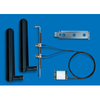

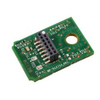



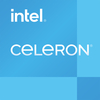








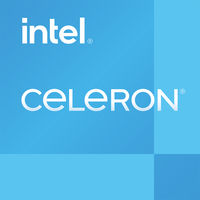
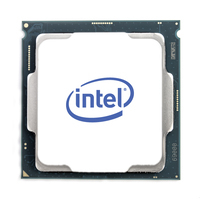
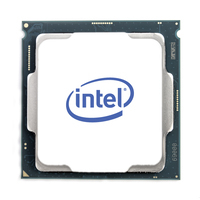
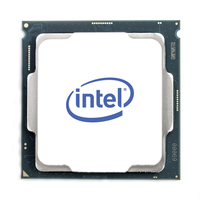



 Denmark
Denmark